Art History
AP Art History
Unit 2: Ancient Mediterranean, 3500 BCE–300 CE
Ancient Mediterranean
Near East Art
Egyptian art
Greece Art
Etruscan art
roman art
Ancient Mediterranean Artworks
White Temple and its ziggurat
Apadana of Darius and Xerxes
Statues of votive figures
Standard of Ur
Code of Hammurabi
Palette of King Narmer
Seated Scribe
Great Pyramids
Great Sphinx
King Menkaura and queen
Temple of Amun-Re
Hypostyle Hall
Kneeling statue of Hatshepsut
Akhenaton, Nefertiti, and three daughters
King Tutankhamun’s tomb
Last judgment of Hunefer
Anavysos Kouros
Peplos Kore
Doryphoros
Helios, Horses, and Dionysus (Heracles?)
Plaque of the Ergastines
Victory adjusting her sandal
Grave stele of Hegeso
Winged Victory of Samothrace
Seated Boxer
Athenian Agora
Parthenon
Temple of Athena Nike
Great Altar of Zeus and Athena at Pergamon
Niobides Krater
Alexander Mosaic
Temple of Minerva
Tomb of the Triclinium
Sarcophagus of the Spouses
Apollo from Veii
Pantheon
Forum of Trajan
The Colosseum
Treasury and Great Temple of Petra
Ludovisi Battle Sarcophagus

Buttresses spaced across the surface; tapers downward so that rainwater washes off
Resembles a mountain
Bent-axis plan
White Temple and its ziggurat
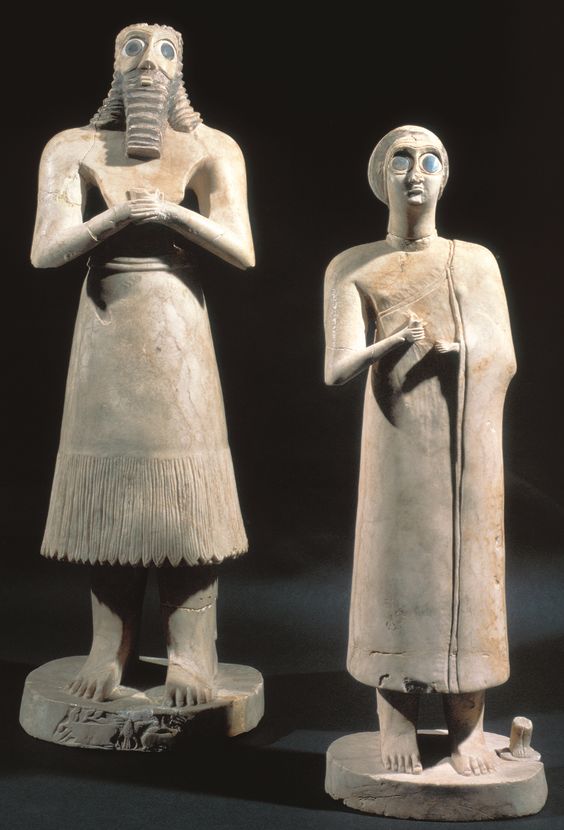
Different heights; hands are folded - gesture of prayer; huge eyes; arms and feet cut away
Placed in a temple to pray before a sculpture of a god.
Statues of votive figures
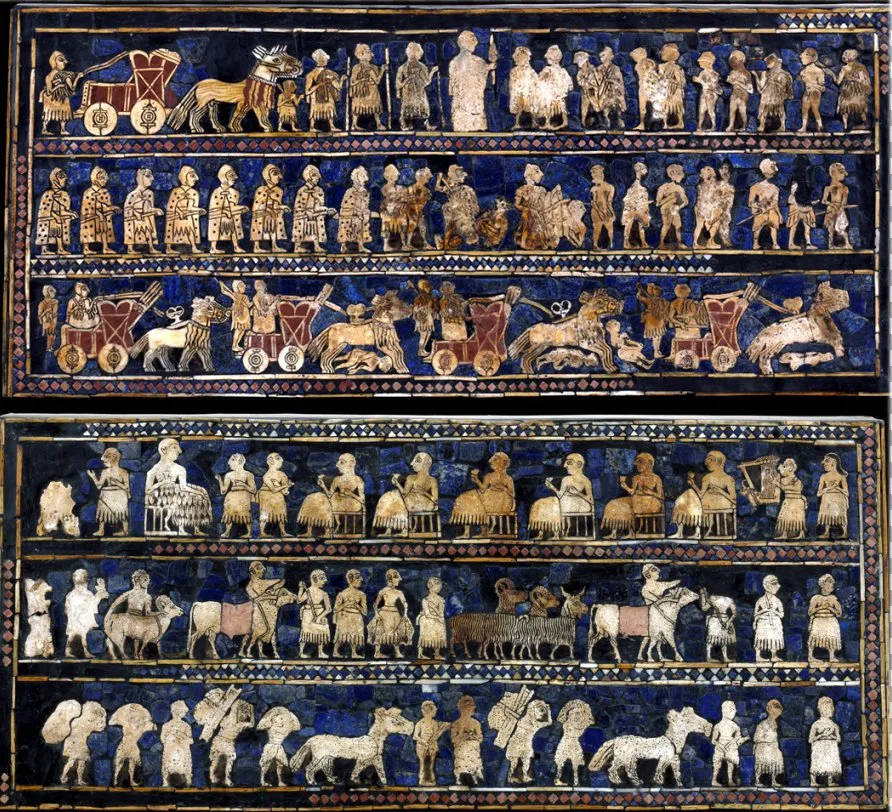
wood inlaid with shell, lapis lazuli, and red limestone
broad frontal shoulders; bodies in profile; twisted perspective
Reflects extensive trading network.
Has two sides: War Side and Peace Side
Standard of Ur

Written in cuneiform, Akkadian language
One of the earliest law codes; 300 entries
Code of Hammurabi
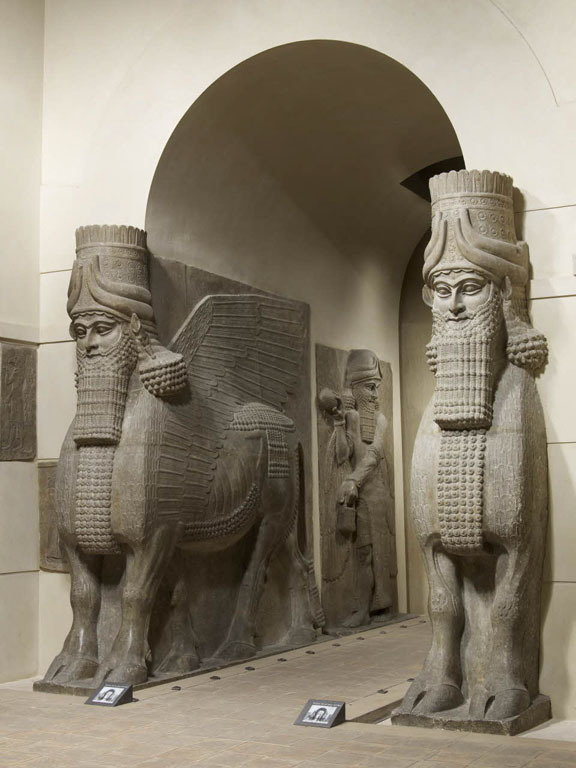
Human-headed winged animal guardian figures
Meant to hold up the walls and arch of a gate
ward off enemies both visible and invisible
Carved from a single piece of stone
Lamassu
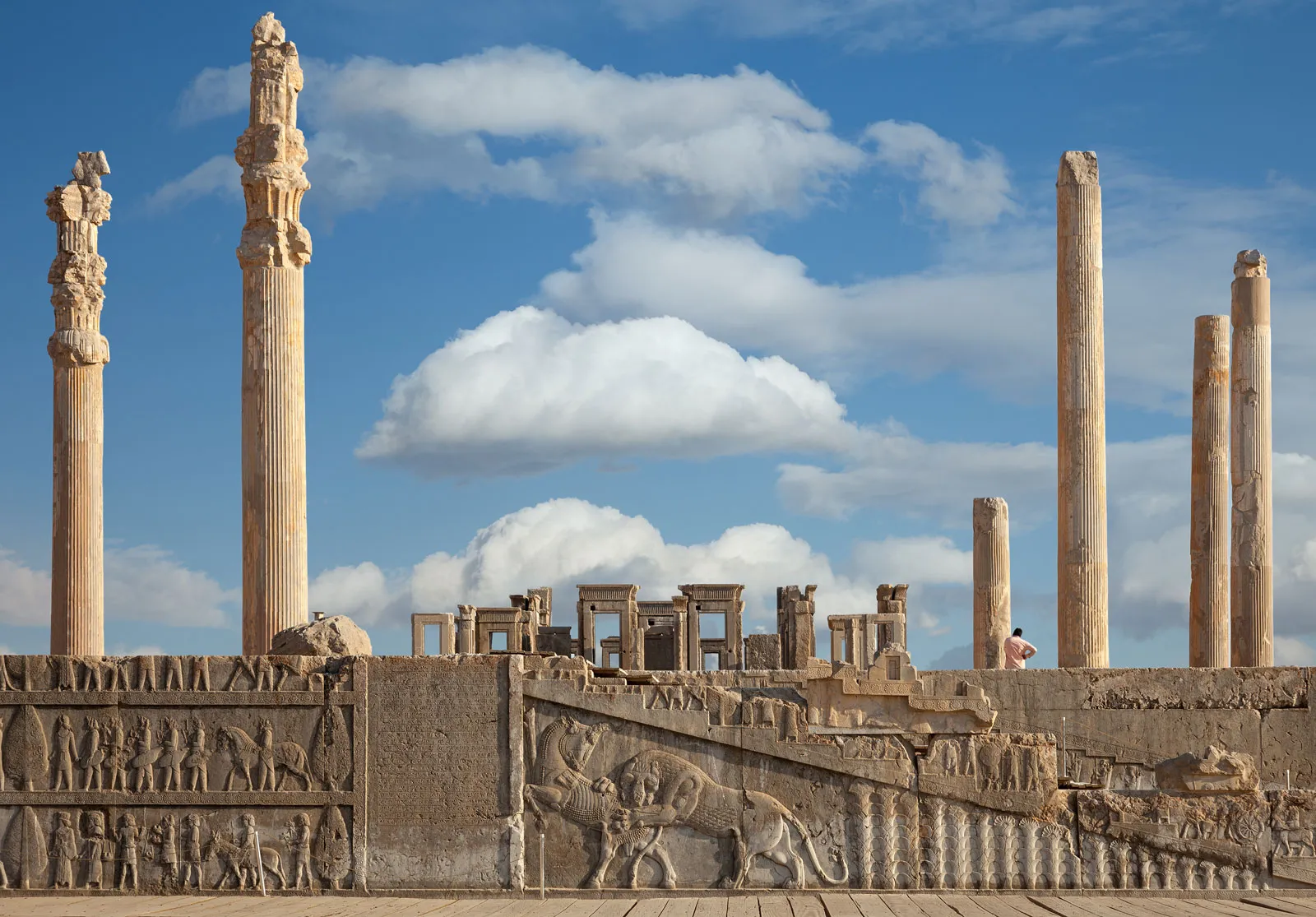
Built for lavish receptions and festivals
Proudly proclaim this complex as the seat of a great empire
Built by Darius I and Xerxes I
Destroyed by Alexander the Great
Apadana of Darius and Xerxes

Represents the unification of Upper and Lower Egypt under one ruler
Schematic lines delineate the muscle structure
Hieroglyphics identify him in the cartouche
used to prepare eye makeup; commemorative
Palette of King Narmer
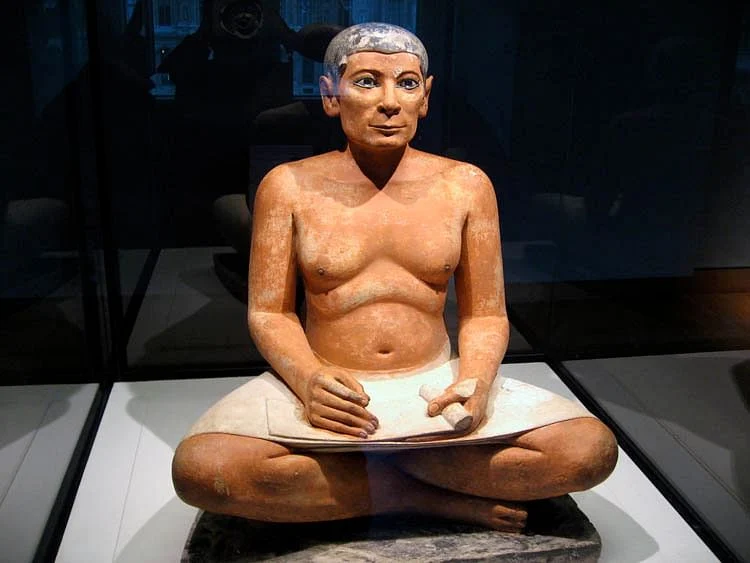
Not a pharaoh
High cheekbones, hollow cheeks, and a distinctive jawline
Created for a tomb at Saqqara as a provision for the ka
Seated Scribe

Giant monuments to dead pharaohs
Preservation of the body and tomb contents for eternity
Served as the king’s palace in the afterlife
Great Pyramids
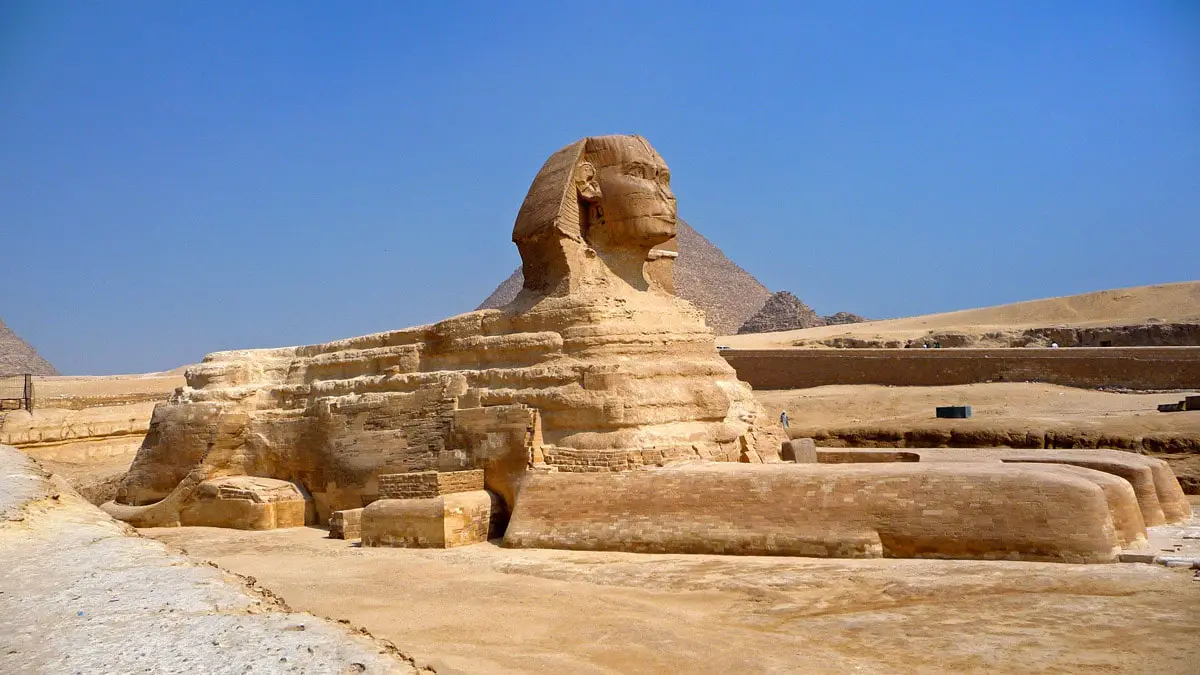
Carved in situ from a huge rock
Body of a lion, the head of a pharaoh/god; protecting the pyramids behind it
Great Sphinx

Two figures attached to a block of stone
seem to stride forward; simultaneously are anchored to the stone behind
a receptacle for the ka of the pharaoh and his queen.
King Menkaura and queen

Axial Plan
Pylon Temple
Hypostyle halls, Massive lintels, columns
Temple for the worship of a god
Temple represents the beginnings of the world
Temple of Amun-Re
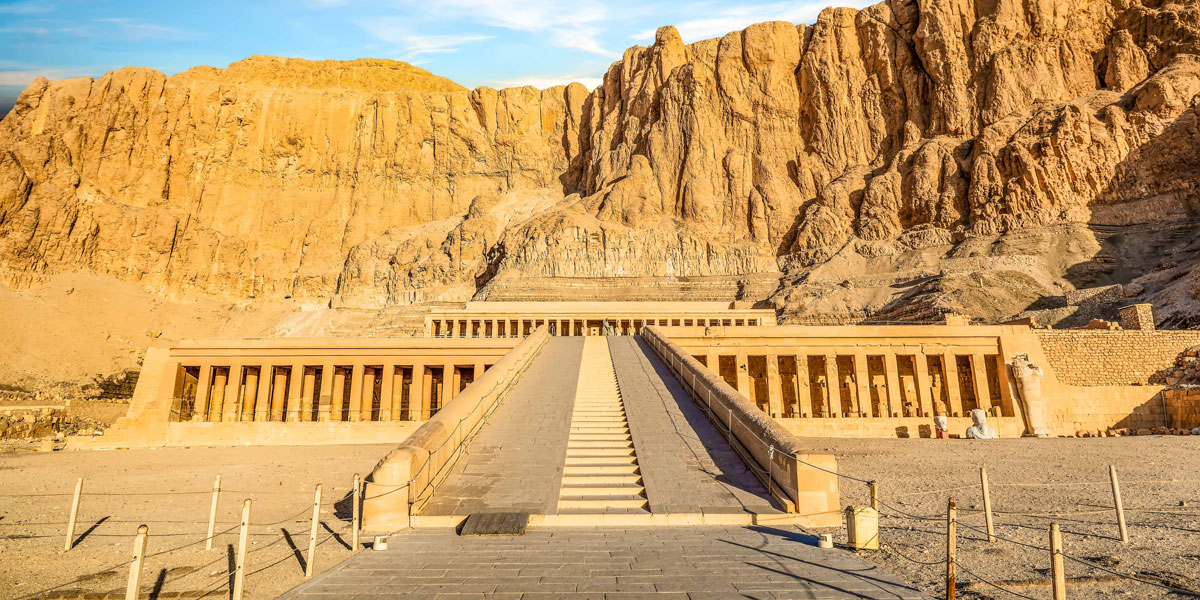
A sandstone partly carved into a rock cliff
Three colonnaded terraces and two ramps
Long horizontals and verticals of the terraces and colonnades repeat the patterns of the cliffs behind; patterns of dark and light in the colonnade are reflected in the cliffs.
Mortuary temple of Hatshepsut
Made of red granite
Male pharaonic attributes
Hatshepsut is a acting queen for her son, presentented with male attributes in most artworks
Wears the white crown of Upper Egypt. Depicted in male costume of a pharaoh
Kneeling statue of Hatshepsut
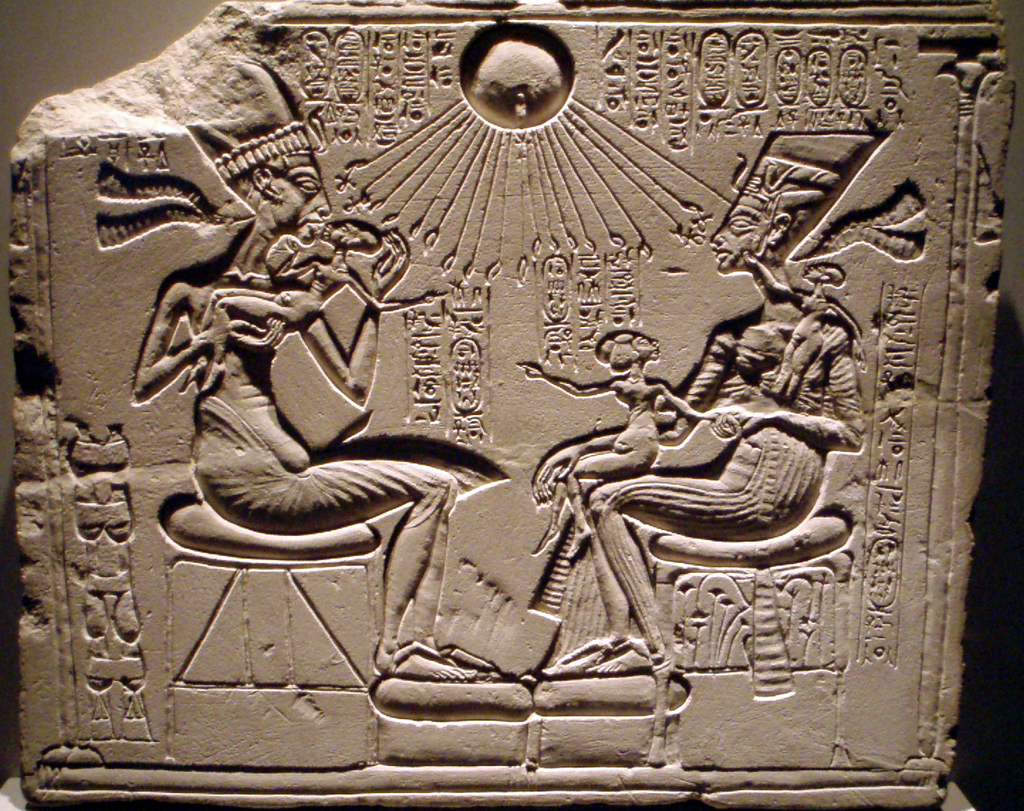
Private piece
Akhenaten is known for his religious revolution, introducing the worship of Aten, the sun disc.
The art depicting Akhenaten, Nefertiti, and their three daughters often shows them in a loving and intimate family setting.
The art of Akhenaten, Nefertiti, and their daughters reflects the radical changes in artistic style during the Amarna Period.
Akhenaten, Nefertiti, and three daughters

A gold with an inlay of enamel and semi-precious stones
Smooth, idealized features on the mask
Holds a crook and a flail, symbols of Osiris; buried with 143 objects
Innermost coffin of King Tutankhamun’s tomb
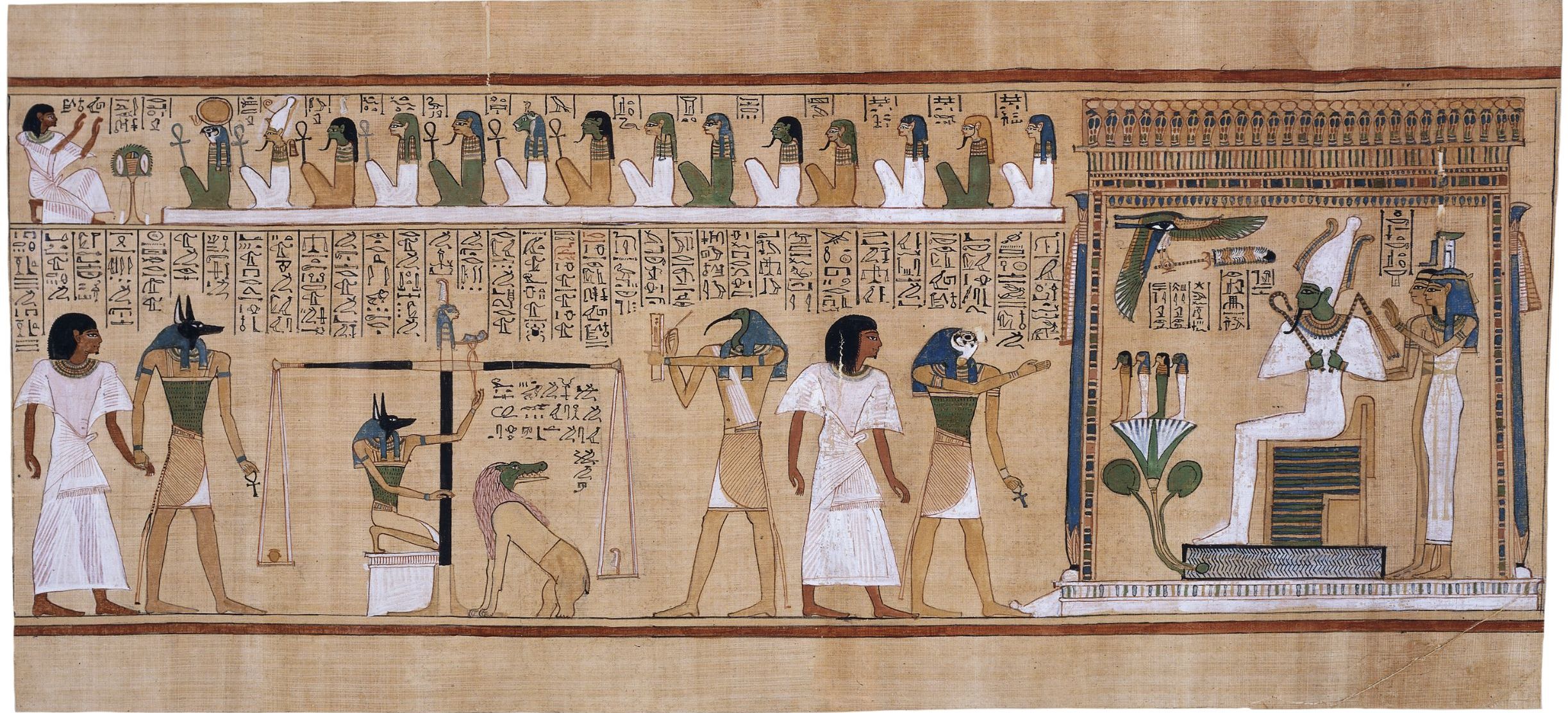
Narrative on a uniform register
Illustration from the Book of the Dead
Top register - white at left before a row of judges; main register - Anubis leads the deceased into a hall
Last judgment of Hunefer

Hand emerges into the viewer’s space
Breasts revealed beneath drapery; Indented waist
Broken hand was fitted into the socket
she is the goddess, either Athena or Artemis
Peplos Kore

Represents Polykleitos’s ideal masculine figure
Marble Roman copy of a bronze Greek original
Doryphoros (Spear Bearer)

Figures seated in the left-hand corner of the east pediment of the Parthenon
contains figures who are present at the birth of Athena, which is the main topic at the center of pediment
Part of the Parthenon sculptures, also called the Elgin Marbles.
Helios, Horses, and Dionysus (Heracles?)

Part of frieze from Parthenon
Scene from Panathenaic frieze; first time in Greek art that human events are depicted on a temple
Contains a religious procession of women dressed in contemporary drapery and acting nobly
Plaque of the Ergastines

Part of the balustrade on the Temple of Athena Nike, a war monument
One of many figures on the balustrade
Not a continuous narrative but a sequence of independent scenes.
Victory adjusting her sandal
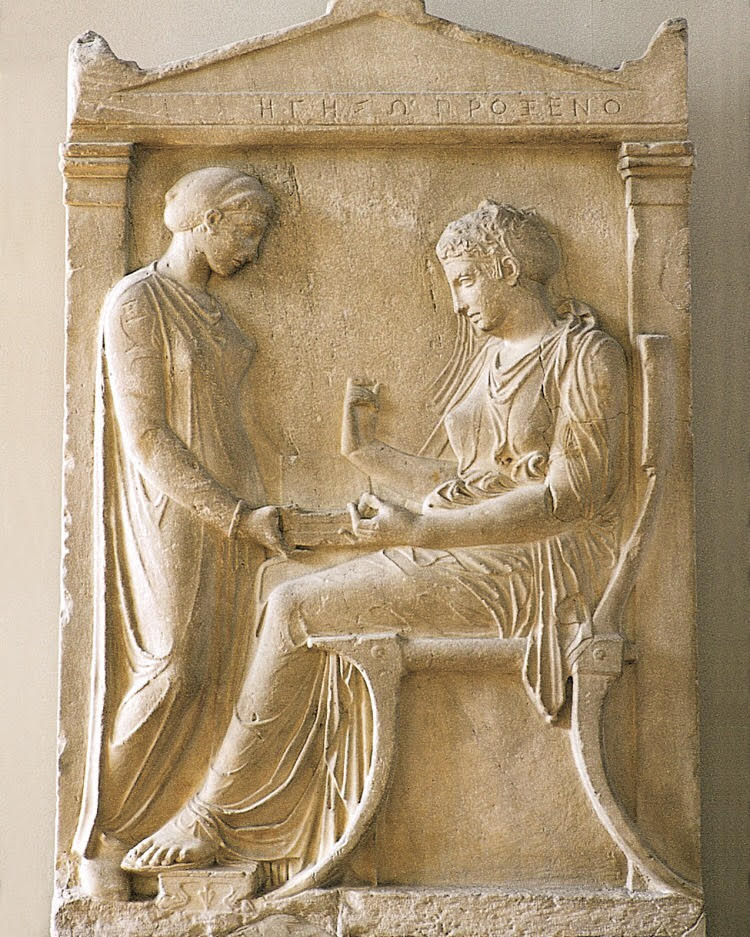
Grave marker
Use of contrapposto in the standing figure
Text includes name of the deceased
Grave stele of Hegeso
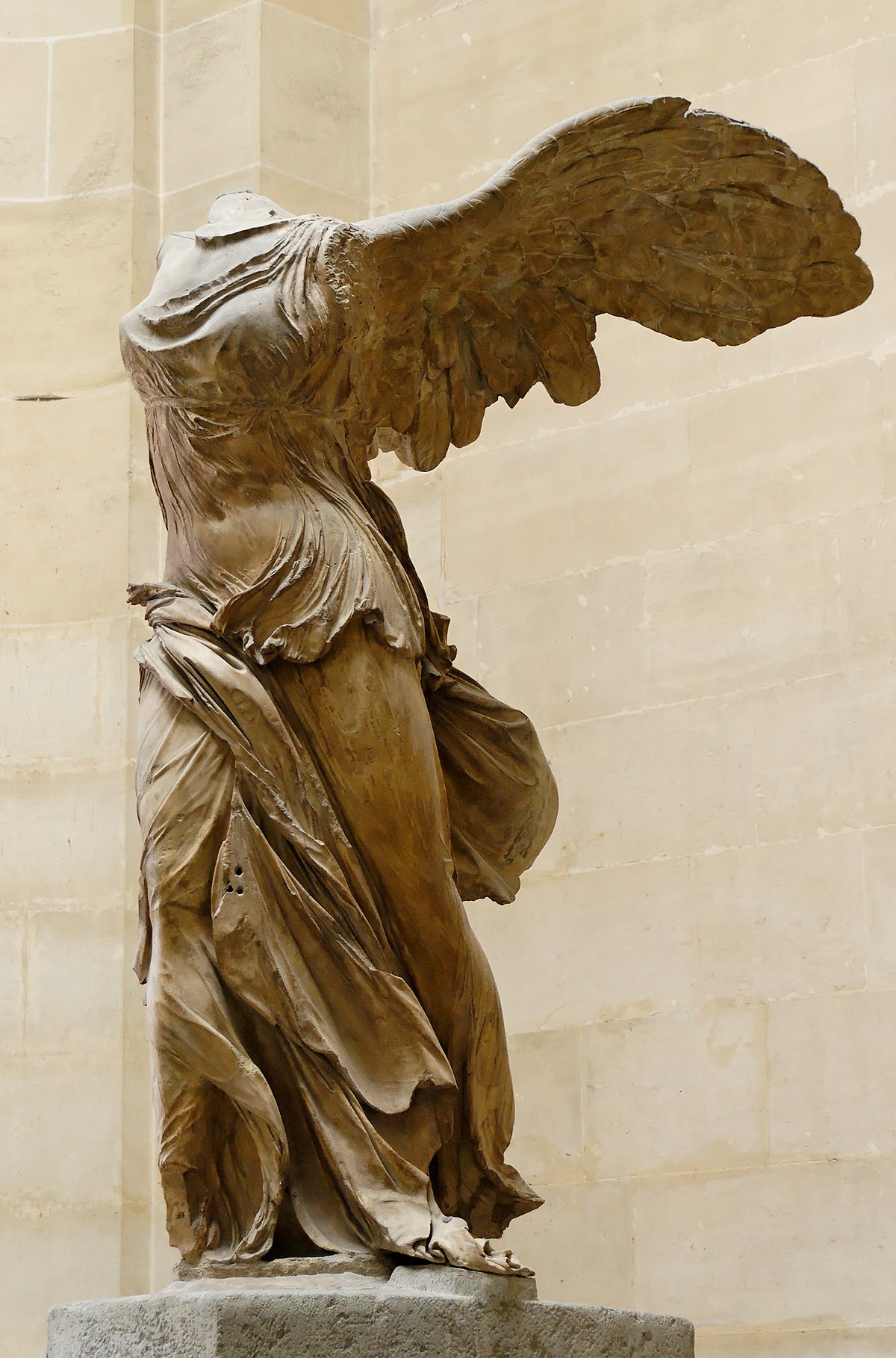
Large heroic figure of Nike placed above the marble prow of a naval vessel
Monumental figure
Made to commemorate a naval victory in 191 B.C.E
Winged Victory of Samothrace
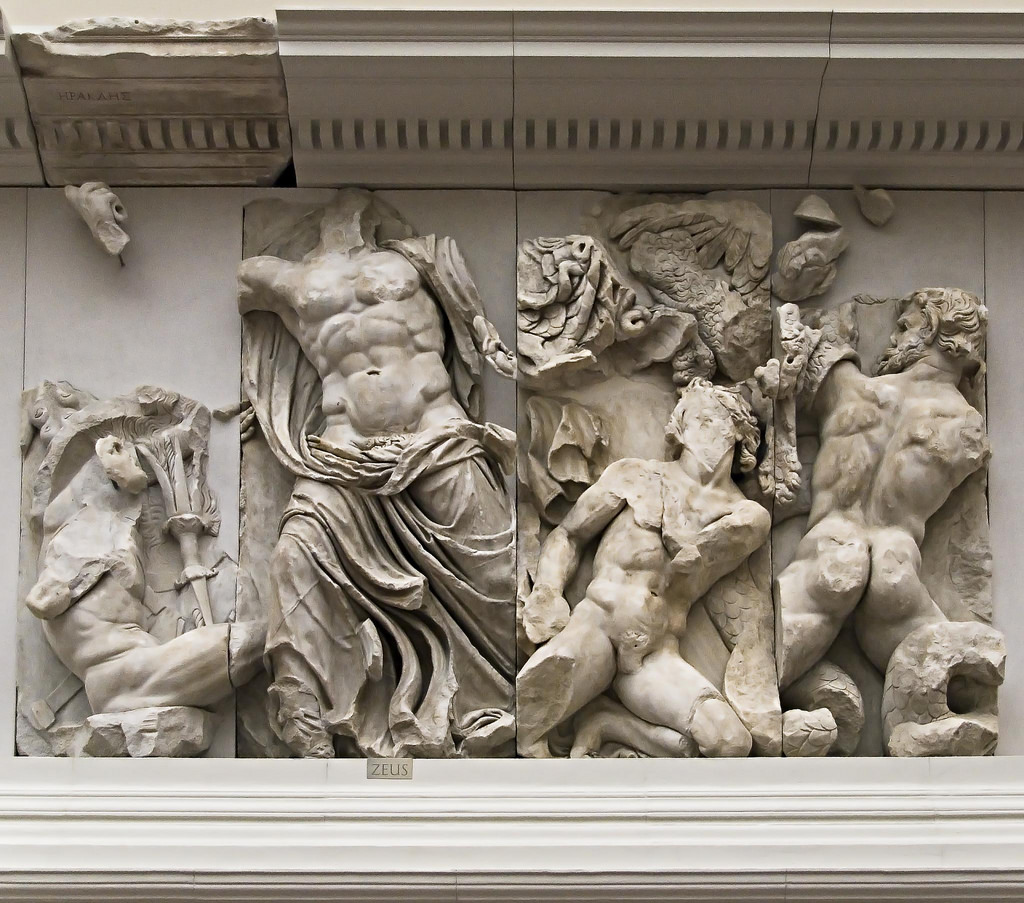
Describes the battle between the gods and the giants
The gods’ victory over the giants offers a parallel to Alexander the Great’s defeat of the Persians
acts as an allegory of a Greek military victory by Eumenes II.
Athena, from the Great Altar of Zeus and Athena at Pergamon

Rare surviving Hellenistic bronze
Older man, past his prime, looks defeated
eye contact involves the viewer
May have been a good luck charm for athletes. Nude fighter; hands wrapped in leather bands
Seated Boxer
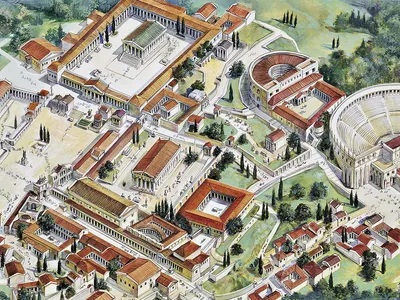
A plaza at the base of the Acropolis in Athens with commercial, civic, religious, and social buildings where ceremonies took place.
Athenian Agora

Architects: Iktinos
Interior built to house a massive statue of Athena; also included the treasure of the Delian League. Greek predilection for algebra and geometry is omnipresent in the design of this building. Constructed under the leadership of Pericles
”Part”
Parthenon
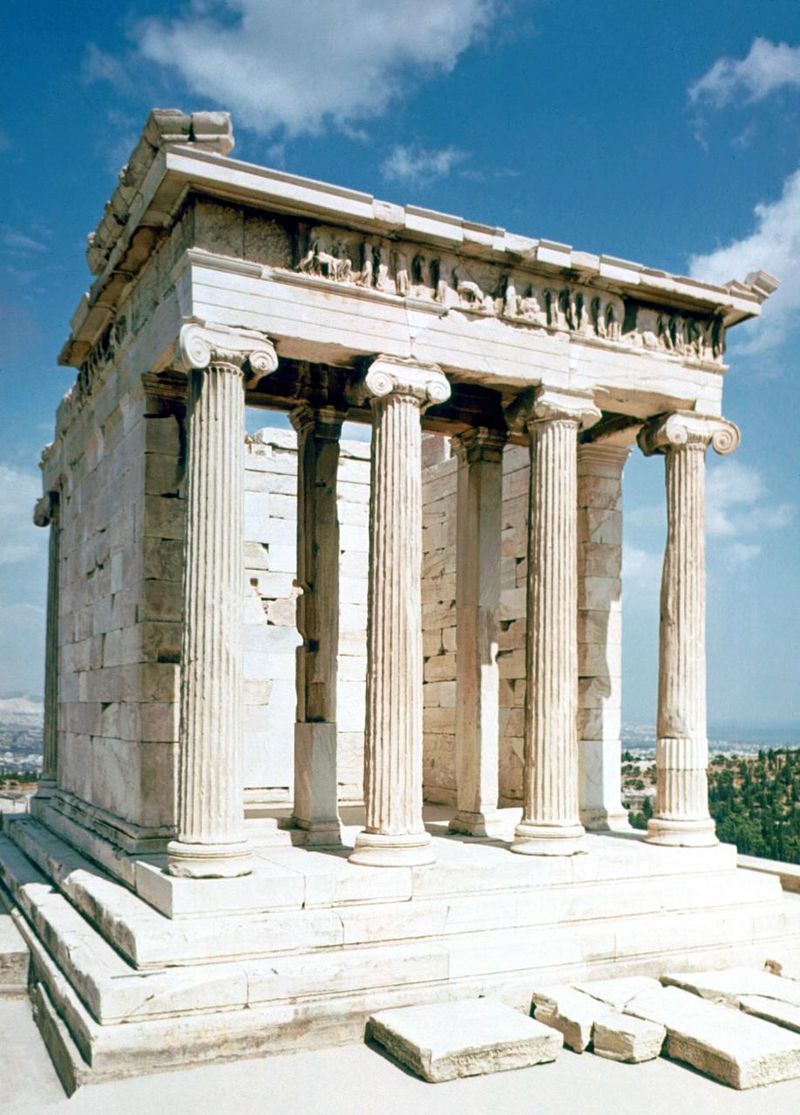
Architect: Kallikrates
Amphiprostyle
Ionic Temple
Built to commemorate the Greek victory over the Persians in the Battle of Marathon
Temple of Athena Nike
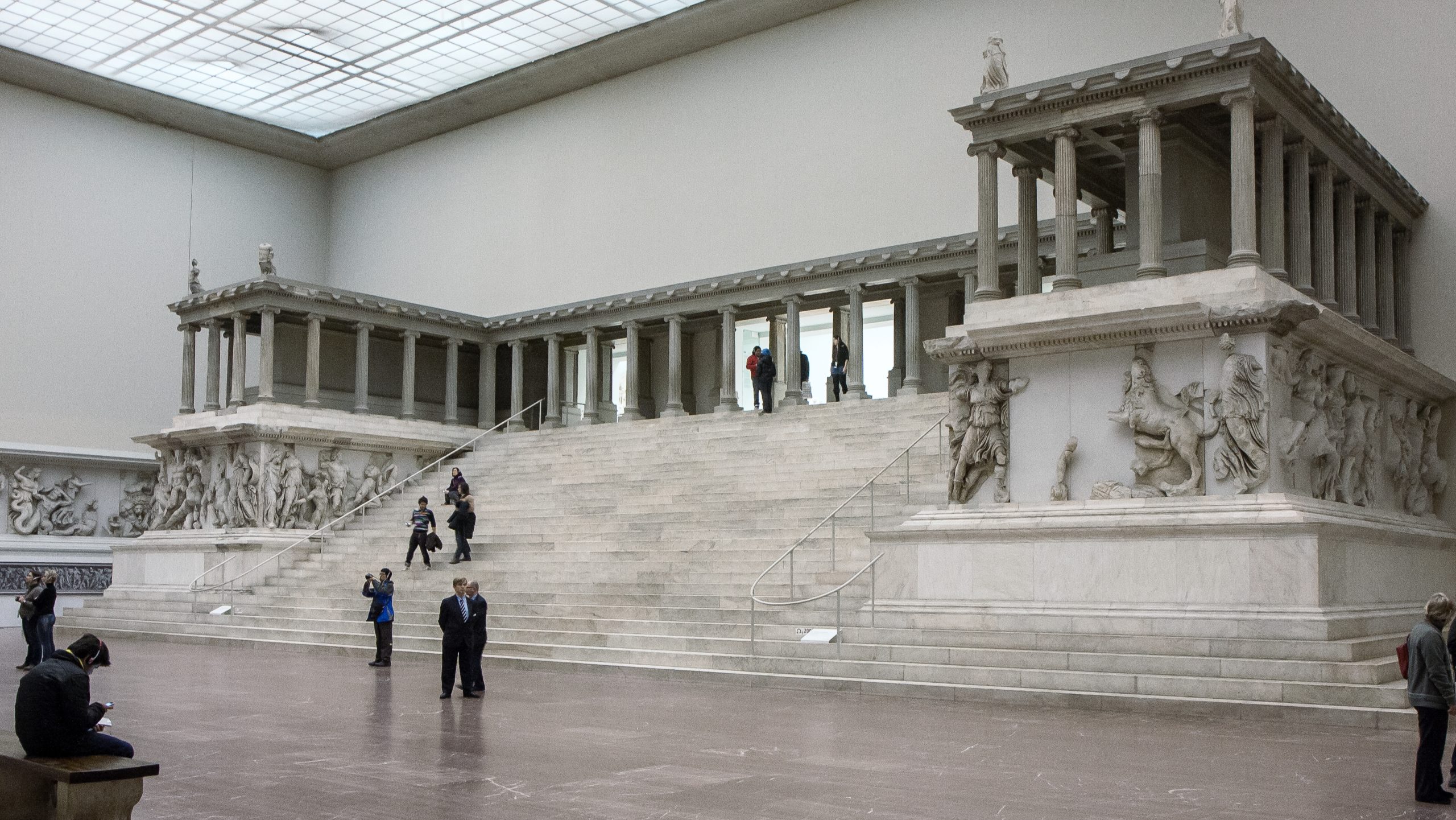
Altar is on an elevated platform at the top of a dramatic flight of stairs
A frieze 7.5 feet high and more than 400 feet long wraps around the monument
Altar dedicated to Zeus and Athena
Great Altar of Zeus and Athena at Pergamon
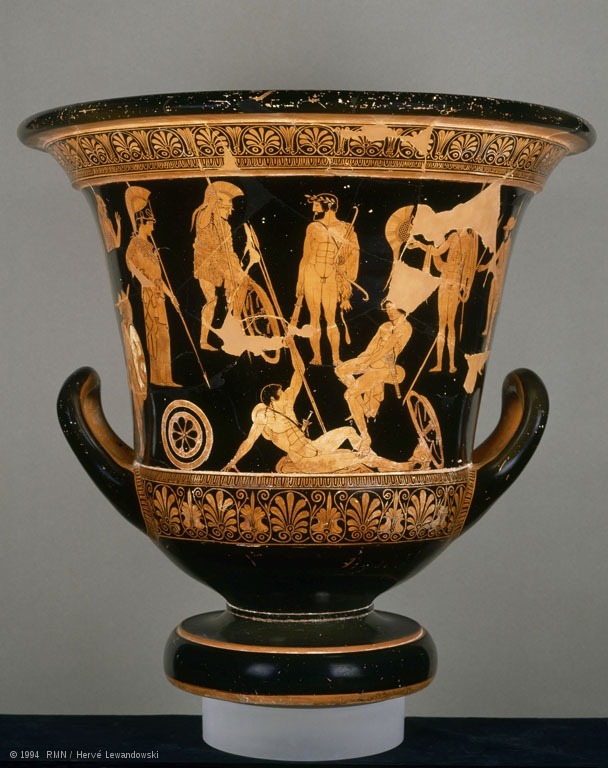
First time in vase painting that isocephalism
For ceremonial use
The killing of Niobe’s children is depicted on one side
Niobides Krater
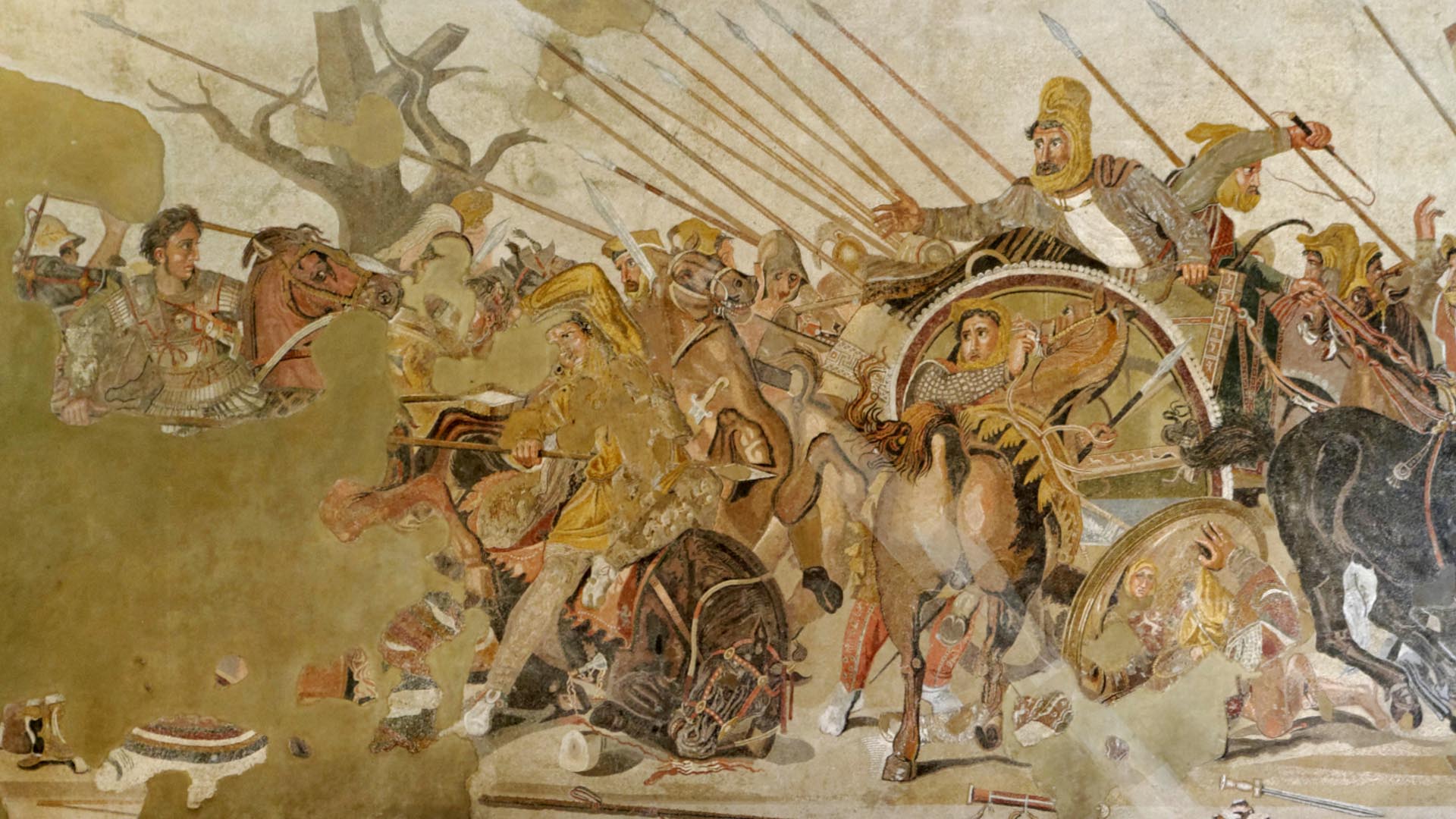
Extremely complex interweaving of figures; spatial illusionism through foreshortening
Use of tesserae instead of previously used pebbles
A copy of a mural made by Philoxenos of Eretria for King Cassander.
Alexander Mosaic
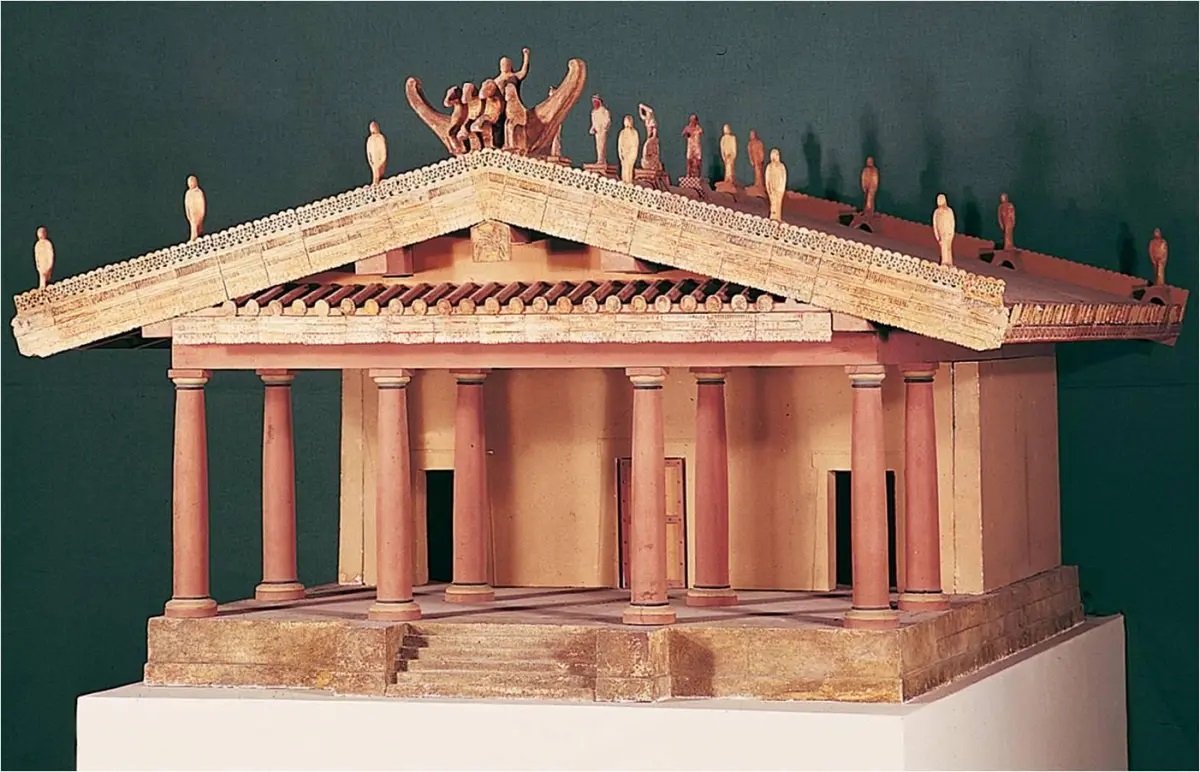
Temple raised on a podium; defined visible entrance
Deep porch places doorways away from the steps
Dedicated to Athena (Minerva)
Temple of Minerva

Ancient convention of men painted in darker colors than women
Painted tomb in an Etruscan necropolis
Named after an ancient Roman dining table, which appears in the fresco
Tomb of the Triclinium

Full-length portrait
Great concentration on the upper bodies, less on the legs
A married couple, whose ashes may have been placed inside
Sarcophagus of the Spouses

One of four large figures that once stood on the roof of the temple at Veii
Part of a scene from Greek mythology involving the third labor of Hercules
May have been carved by Vulcan of Veii, the most famous Etruscan sculptor of the age.
Apollo from Veii
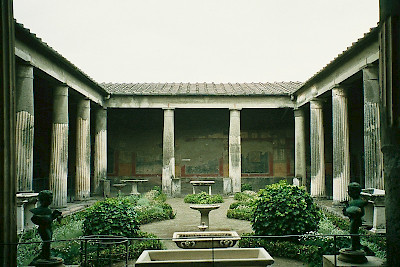
Private citizen’s home in Pompeii
Originally built during the Republic with early imperial additions
Two brothers owned the house; both were freedmen who made their money as merchants.
House of Vettii
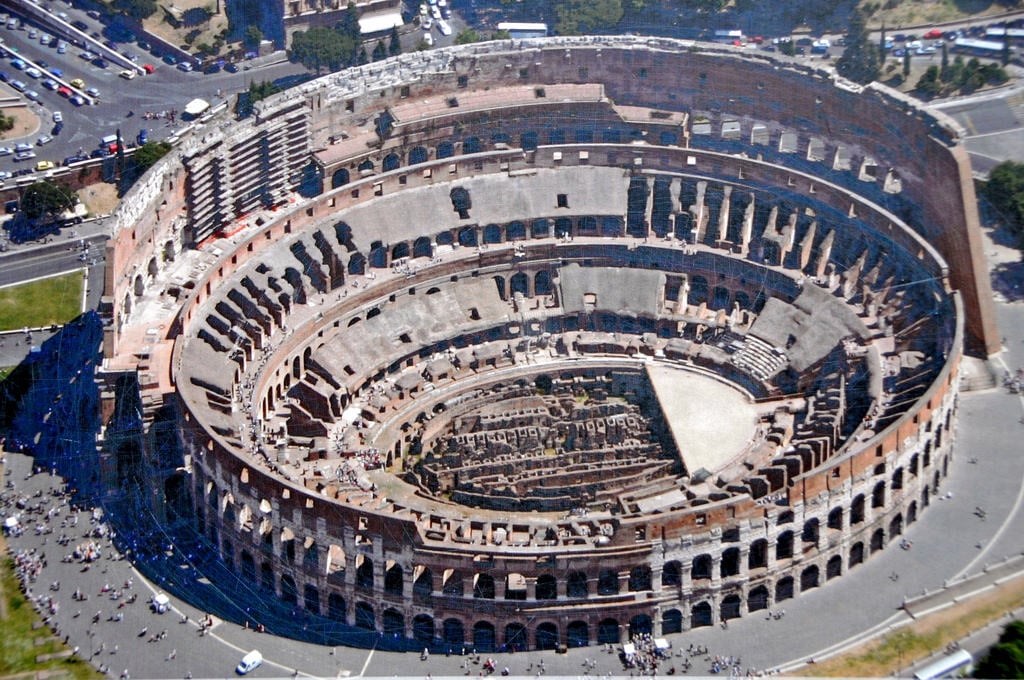
meant for wild and dangerous spectacles
gladiator combat, animal hunts, naval battles. Accommodated 50,000 spectators
76 entrances and exits circle the facade
The Colosseum
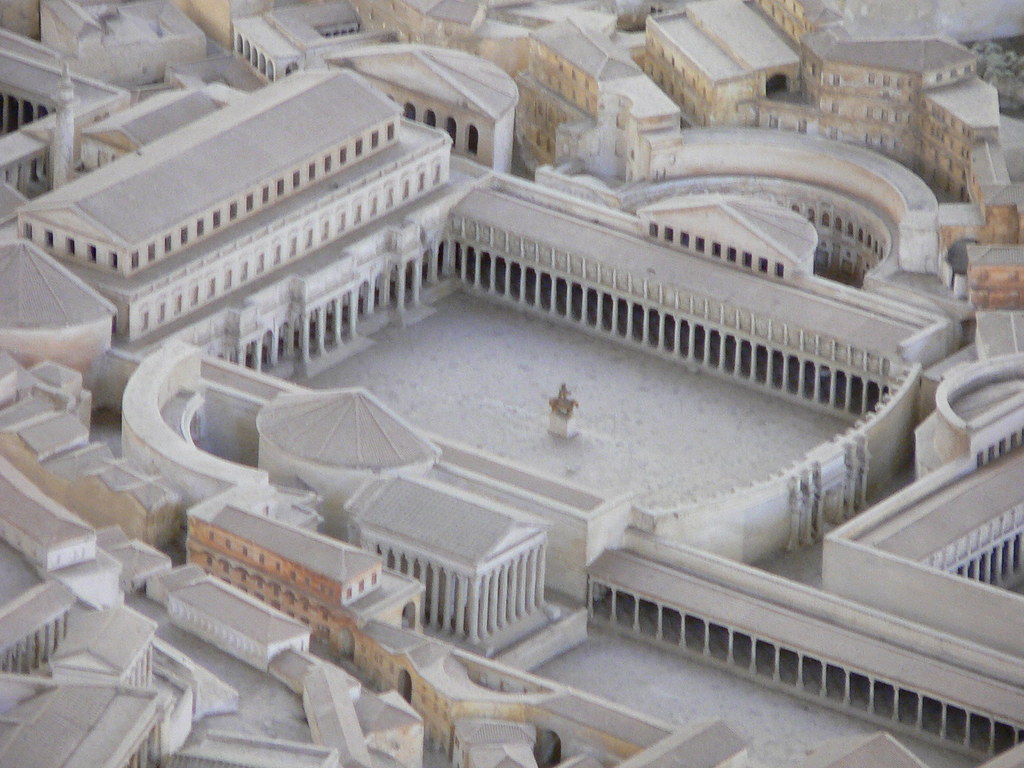
Large central plaza flanked by stoa-like buildings on each side
Originally held an equestrian monument dedicated to Trajan in the center
Built with treasure collected from Trajan’s victory over the Dacians.
Forum of Trajan

Law courts held here
apses were a setting for judges
Grand interior space (385 feet by 182 feet) with two apses
Basilica of Ulpia
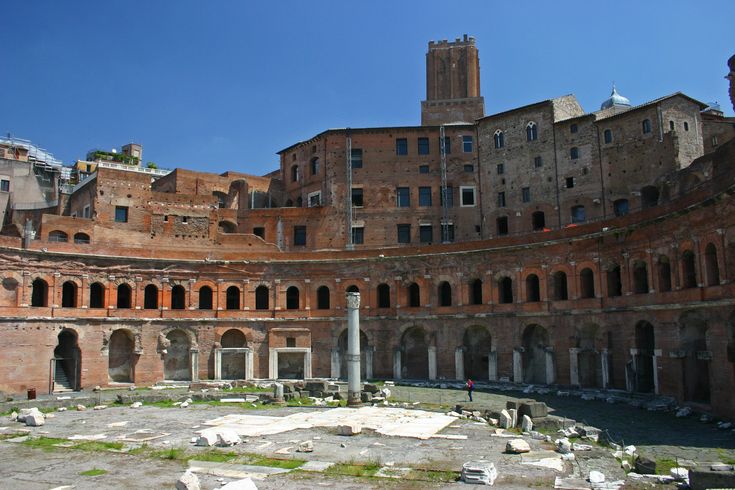
Semicircular building held several levels of shops
Main space is groin vaulted; barrel vaulted area with the shops
Multilevel mall. Original market had 150 shops
Trajan Markets

A 625-foot narrative cycle (128 feet high) wrapped around it150 episodes, 2,662 figures, 23 registers
Continuous narrative
Scenes depict the preparation for battle
Visitors who entered were meant to wander up the interior spiral staircase to the viewing platform at the top
Column of Trajan

it was built as a Roman temple dedicated to all the gods
It may have been dedicated to a select group of gods and the divine Julius Caesar and/or used for court rituals
“Pan” = whole
Pantheon
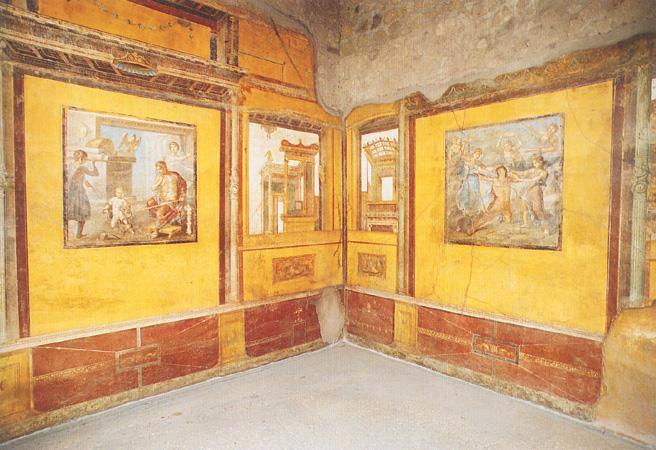
A chamber in the Palace of Knossos that features a fresco depicting the mythological story of King Pentheus of Thebes
Pentheus is shown being torn apart by his own mother and other women, who were under the influence of the god Dionysus
The room is believed to have been a place for ritualistic activities related to the worship of the god.
Pentheus Room
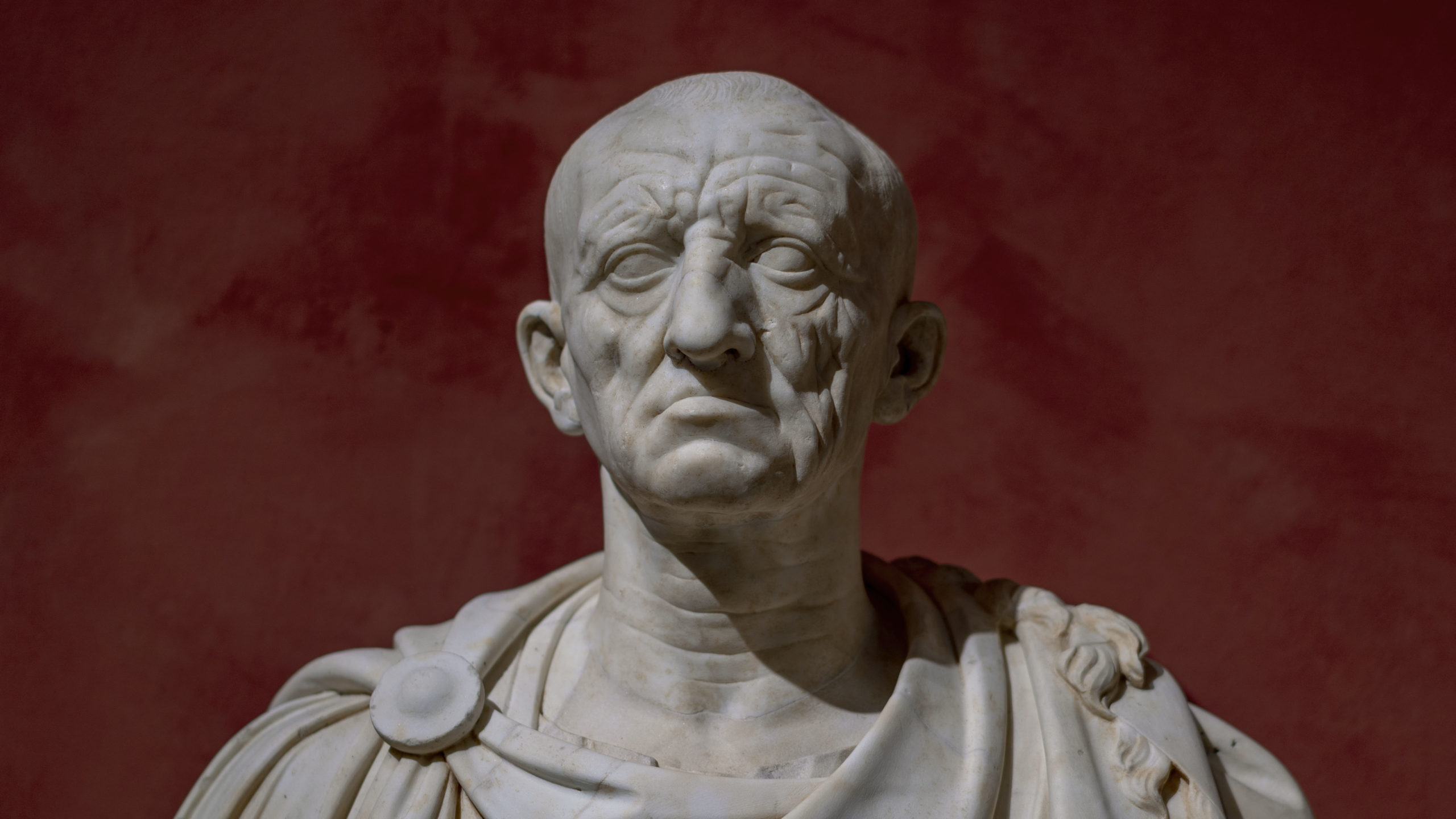
A marble sculpture dating back to the 1st century CE, depicting the head of a Roman patrician
Showcases the idealized facial features of a wealthy and powerful Roman nobleman, with a strong jawline, prominent nose, and deep-set eyes.
Head of a Roman patrician
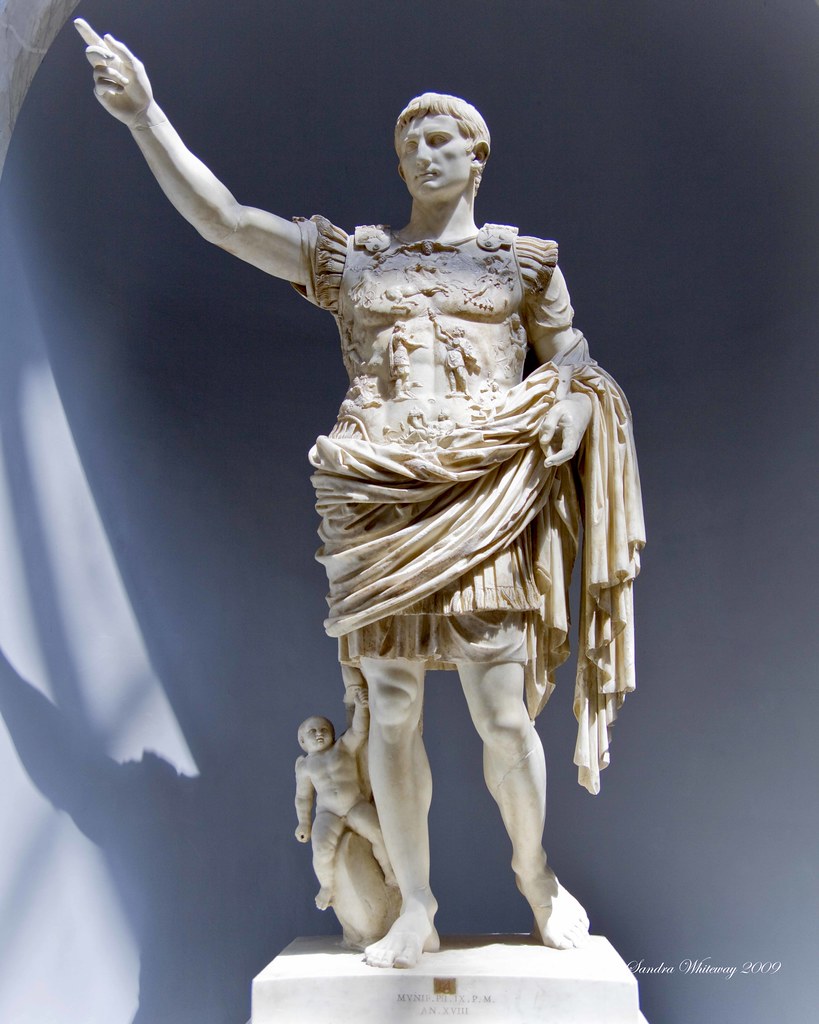
A marble statue of the Roman emperor Augustus
Depicts Augustus in military attire, with his right arm extended and his left hand holding a scepter
Shows the emperor's power and divine status.
Augustus of Primaporta
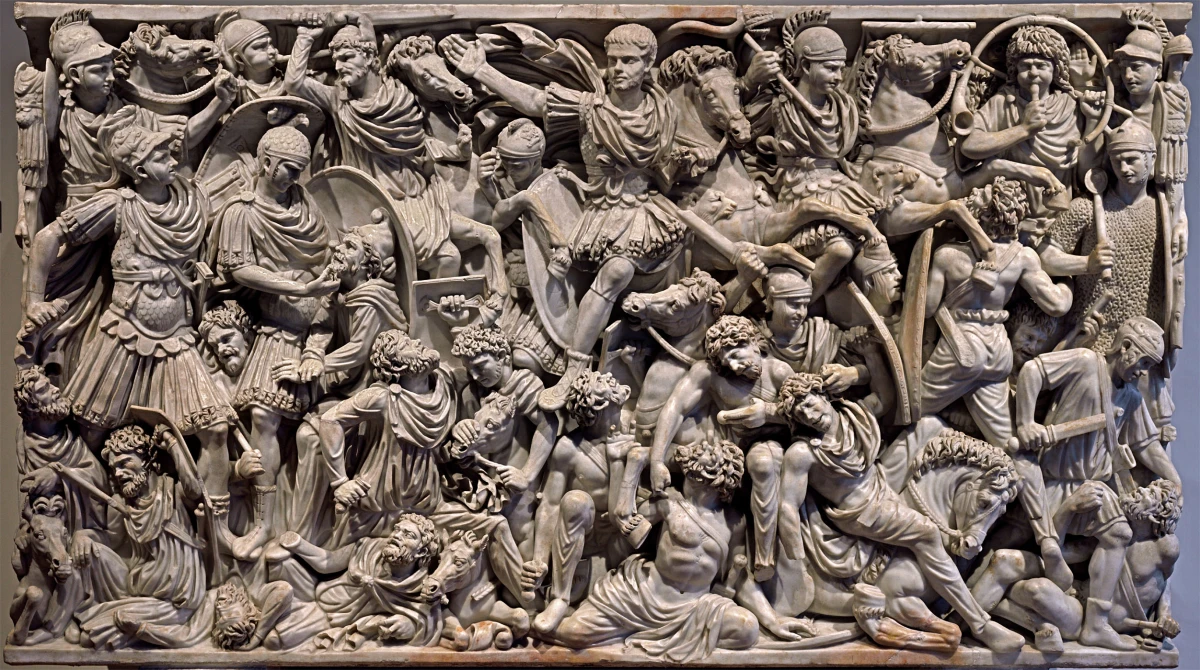
Roman sarcophagus depicting a battle scene
Possibly the Battle of Romans and Goths
Made in the 3rd century AD
Ludovisi Battle Sarcophagus